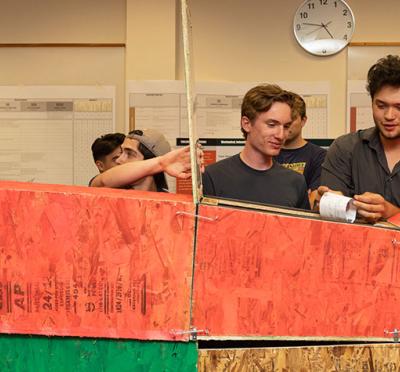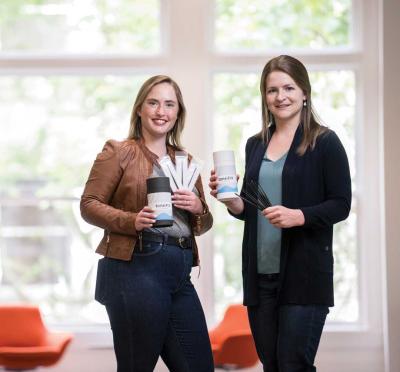
Onan Demirel, assistant professor of engineering, focuses his research on how to incorporate human needs, abilities, and limitations into the product design process. As the newest member of the Engineering Design Laboratory, he enables visualization of human-product interactions by creating digital representations of humans that designers can use to evaluate human well-being and overall system performance. With seven active faculty, the Design Engineering Lab is the largest academic mechanical engineering design research lab in the United States.
“Most products have a human interaction component, whether it’s operating computers, cars, or airplanes, or even repairing them,” Demirel said. “Often, these human elements are not given adequate attention. I explore how we can represent the interaction between humans and products digitally. When the time comes for physical prototyping, the product will already be more refined and require fewer changes, which reduces costs, decreases the design cycle time, and shortens time to market.” The approach also reduces errors and safety concerns while improving overall product performance. Driving all of Demirel’s work is a lifelong desire to help people: “I want to make an impact, and I perceive my career in engineering as a way to change people’s lives.”
Demirel joined the Oregon State faculty in 2016 after earning his Ph.D. in industrial engineering from Purdue University the previous year. He also received his B.S. in industrial engineering in 2006 and his M.S. in industrial engineering in 2009, both from Purdue.
Typically, products are designed without a full understanding of end-user needs, according to Demirel. “Designers come up with ideas and create a physical prototype, and at the very end of the process they present it to small test groups to find out what changes are needed,” he explained. “But for large products like automobiles or naval vessels, that’s impractical and expensive. Digital models of humans allow designers to generate multiple alternatives and explore, virtually, how each one fits the needs of potential users.”
He likened his work to building virtual versions of the crash test dummies used in auto safety tests. Ideally, crash tests could be done entirely with computer modeling rather than by destroying real cars. The same idea could apply to other scenarios that are too costly or complex to conduct in the physical world (such as an emergency evacuation drill at a nuclear power plant), and where digital representations of people and their environments provide unparalleled flexibility.
Demirel is currently working on a study to assess roof support pillar systems across a range of vehicles, particularly SUVs. The research augments his doctoral thesis. As automobiles have grown larger, so have their roof support pillars, which can block a driver’s vision. Wider pillars have been linked to accidents. Changing the geometry of pillars is one possible solution that Demirel is considering. He plans to use virtual reality to allow subjects to experience driving with different pillar configurations and determine how various designs affect driver decisions and, ultimately, safety.
He’s also conducting health-related research to track medical implants, such as hip and knee replacement joints. The system he envisions would make every implant trackable so that health care professionals and implant manufacturers know when a patient received a particular implant and where the procedure was done. “My focus is to create a framework so that manufacturers, doctors, and patients are in one communication loop,” said Demirel. “Eventually, I’d like to be able to capture the data in real time.” For example, implants may bend or develop a tiny crack if a patient falls, which may not cause any immediate signs or symptoms but could lead to implant failure. Demirel would like to create a system using sensors embedded in implants that collects data about such events and warn of impending failures.
By the time he was just five or six years old, Demirel knew he would become an engineer. “I never went through that period of wondering what I would do in life,” he said. Experiencing the work environment of his father, a civil engineer, made a big impression. “Just looking at how complex infrastructure is built in harmony with humans and by large-scale machinery was inspiring,” he said, adding that he routinely questioned how the natural and human-built worlds worked and had an innate inclination for making things. In elementary school, he built toy boats and tested their seaworthiness in the Mediterranean.
Demirel describes his approach to teaching as highly interactive. He endeavors to create a lively give-and-take that elicits questions. “I want students to think” he said. “I don’t want them to have this notion that because I’m the professor whatever I say is the ultimate truth.” Instead, he encourages scientific curiosity, engagement, continuous improvement, and holistic understanding — an approach founded on the principles of life-long learning and that focuses on fostering future engineers. “I become a student too,” he added. While pursuing his Ph.D. at Purdue, Demirel won the Teaching Academy Graduate Teaching Award. “That showed me that what I did in class made a difference to my students.”
— Steve Frandzel



